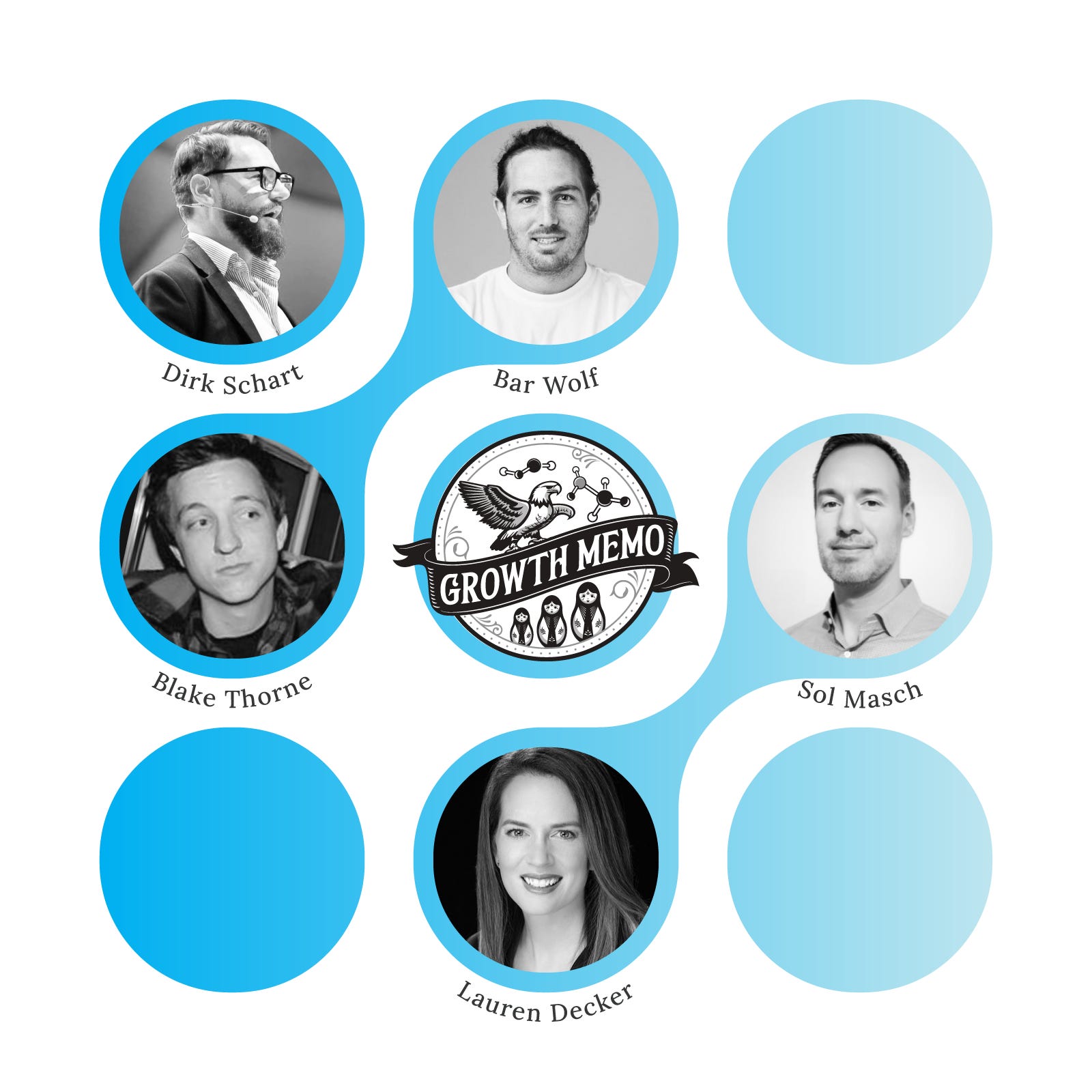SEO + Product Marketing = A Blueprint For Brand Building via @sejournal, @Kevin_Indig
Discover the connection between brand building and SEO success. Explore how product marketing skills and insights can enhance organic traffic and drive revenue. The post SEO + Product Marketing = A Blueprint For Brand Building appeared first on Search...

Having a strong brand makes everything in SEO easier.
Brands have better user signals on their sites, better click-through rates in the SERPs, and get preferential treatment from Google.
Google’s algorithms elevate sites with strong brand signals and punish companies that are too aggressive about SEO without having “the engine” to back it up.
 Image Credit: Lyna ™
Image Credit: Lyna ™
There is a common belief that SEO can’t do much about the brand, but that’s wrong. We often simply miss the tools.
Product marketing skills and insights can significantly improve the impact of organic traffic and support brand building in the process.
Both disciplines sit between product development and customer needs. Both work on content, audience understanding, and driving revenue – but from different angles.
Together, they can amplify each other. It’s an opportunity most companies miss, to their detriment.
One key lesson is to think long-term about brand impact. Focusing on the user’s value helps create a stronger brand connection, which pays off over time. It’s about building trust and loyalty that translates into sustained engagement and recognition. – Bar Wolf
 Image Credit: Kevin Indig
Image Credit: Kevin Indig
I spoke with five seasoned product marketing experts about their lessons from decades in the field to distill what SEO pros can learn from product marketing:
Lauren (Hobbs) Decker, senior consultant at Carema and former VP of brand & product marketing at G2. Bar Wolf, product marketing manager at Wix. Blake Thorne, head of marketing at Govly. Dirk Schart, portfolio marketing lead at PTC. Sol Masch, group vice president, product at WebMD.Product Marketing Tools And Frameworks For SEO Pros
Product marketing and SEO are highly complementary. They can unify customer research and quantitative insights for better prioritization and impact measuring.
They can uplevel user experience with the right messaging. And they can improve the quality of traffic with clear differentiation.
It makes sense: The goal of product marketing is to help the product organization bring the product to market with market research, positioning and messaging, go-to-market strategy, customer education, and sales enablement.
While SEO pros research keywords and analyze search volumes, product marketers spend a lot of time talking to customers.
Traffic is great, but what makes people remember your product? – Blake Thorne
Lesson 1: Improve Content With Customer Insights
When product marketers and SEO teams collaborate early and often, they enable the audience to find relevant content that addresses their specific challenges and needs — making marketing efforts more efficient and effective. – Lauren Hobbs Decker
You will surely agree that customer insights are critical for any form of marketing.
In my work with high-performing tech companies, however, I often notice that marketing teams have no idea where to find customer research, and they don’t have open channels to existing customers.
The results of performance marketing, including paid and organic search, made it too attractive to focus on metrics.
The solution is to either collaborate with product marketing to learn from customer insights or get them yourself.
Product marketers get customer insights through:
1-on-1 interviews. Surveys. Focus groups. Reviews. Customer support/sales.They look for:
Pain points. Motivations. Expectations.Good questions to ask:
“What challenges are you currently facing in [specific area related to the product’s value]?” “How are you currently addressing this challenge, and what do you like or dislike about your current solution?” “When evaluating solutions for this challenge, what are the most important factors you consider?” “Have you considered making changes to your current approach? If so, what’s holding you back?” “What would convince you that a new solution is worth exploring or investing in?”Some of my favorite customer feedback tools:
Google Sheets / Excel Wynter Dovetail Opinion X Maze Lookback LyssnaOther opportunities for insights:
Analyze reviews on g2.com. Product analytics data from Amplitude or Mixpanel. Insights from sales, product, and customer success/support teams. Analyze the positioning and messaging of key competitors.SEOs can use customer insights to:
Create product landing pages or category pages (in ecommerce) for use cases and features and competitor comparison pages like ahrefs.com/vs for perceived competitors. Build lead-gen tools or quizzes based on the most common customer problems and questions. Generate content for pain points mentioned in interviews that might not have “search volume” but are searched by your target audience. Use the wording of customers/prospects and embed quotes in the content. Addressing common pain points and expectations in content. Prioritizing topics and keywords on the roadmap (instead of by search volume only). Inform content length and the level of detail. Incorporate product-tested messaging into meta titles and descriptions.Tip: AI tools can process large volumes of data from customer reviews, surveys, or social media to identify pain points, motivations, and trends faster than traditional methods.
I so often land on a website via SEO and can see a very strong SEO program at play, but I’m not left with any impression of what the company actually does.
For many SEOs, this moment might be “mission accomplished,” they’ve got their rankings and traffic.
This is where brand and product marketers can step in and work alongside SEOs to augment the experience on that page – what makes people remember the product? What makes people know the brand and have a positive sentiment even if the initial visit is short? – Blake Thorne
Lesson 2: Send Stronger User Signals With Clearer Differentiation
Since the DoJ lawsuit against Google and the ranking factor leak, we officially know that Google uses user signals to a high degree.
In my Memos, I often highlight the importance of a good user experience on top of high-quality content to impact user signals.
Differentiation can top it off by offering another lens for topic/keyword prioritization besides search volume and difficulty.
The deep market and customer understanding of product marketing helps SEO pros understand where a company stands out and where competition is tough.
Differentiation is how a company stands out with unique features and value.
In my guide to building a winning SEO strategy, I explain that an absolutely essential component of any strategy is strong differentiation:
Critical: the approach needs to be differentiated. You need to do things differently (competitive advantage or asymmetry). You cannot expect to do the same things as your competitors and beat them. That’s just a way to end up in attrition warfare and obsession with operational efficiency. Differentiation creates greater value, prices and margins.
For clear differentiation, you need to deeply understand three things: the market, alternatives, and customers.
Figure out what problems customers are trying to solve, the options at their disposal, and the impact that solving those problems has on their business/life. You can use interviews and review platforms like G2 or Trustpilot to source insights.
The way most SEOs measure “the market” is by looking at competitors’ ranking for the same keywords.
That is a good start – and valuable for product marketers – but it needs to go further. SEO pros should also factor in “perceived competitors” (i.e., What alternatives does the customer have in mind that product marketers can bring to the table?).
“Different is better than better.” – Dirk Schart
Good differentiation is very specific and makes it easy for customers to understand the value they get from your product.
There are three outcomes from differentiation work:
Positioning Statements: a clear articulation of how the product fits into the market, who it serves, and why it’s better or different. See an example from Slack: “Making work simpler, more pleasant and more productive.” Value Propositions: Statements that highlight the key benefits and outcomes customers can expect, tailored to specific customer needs or segments. In the example of Slack, again, “Streamline communication, reduce emails, and increase productivity” Messaging Frameworks: A spreadsheet covering the product’s unique features and benefits, broken down by audience segments, use cases, or buyer personas.SEO pros should incorporate differentiation factors into content briefs to influence the tone, sub-topics, meta titles, headings, and CTAs on any page on the site.
In the YMYL/Health space that WebMD participates in, trust from consumers is paramount.
According to a recent Harris Poll study, 1 in 3 Americans don’t know whether the health information they read online and on social platforms is truthful or if the source is being paid to promote things, and ultimately they can’t determine what’s true and what’s false.
WebMD prides itself on editorial integrity – advertisers have zero influence on our editorial content, and all of our content is fact-checked by medical professionals for accuracy.
Moreover, our medical reviewers audit all of our content frequently to ensure that months/years after the content is published, it’s updated as necessary to stay accurate even as medical research & science evolve.
In part, these efforts contribute to WebMD being the most recognized and trusted name in online health – we’ve earned our trust over the past 25 years and have become a household name for quality health information. – Sol Masch
Lesson 3: Drive Better Traffic With Strong Positioning And Messaging
Obviously, driving traffic is not enough. It needs to be the right kind of traffic. Good positioning and messaging can make the difference because they can act as a lens for topic/keyword prioritization.
Messaging can elevate the user experience by showing the copy on landing pages on other types of content that highlight how and why the product is a good fit.
The goal of positioning is to define how a product is perceived by the market relative to its competitors. Who is it for? What problem(s) does it solve? How is it better? It’s high-level and strategic.
Messaging turns the company’s positioning into narratives and statements to use in copy, sales material, and advertising. It’s specific and operational.
For example:
Positioning: “Our app is the easiest way for busy parents to organize their kids’ schedules, standing out for its intuitive design and automatic reminders.” Messaging: “Effortlessly manage your kids’ schedules with our user-friendly app. Save time and never miss an event with automatic reminders. Trusted by thousands of busy parents.A basic messaging and positioning framework is the Value Proposition Canvas:
Define jobs (goals), pains (frustrations), and gains (desired outcomes). Outline the product/feature you offer, pain relievers (how it alleviates frustrations), and gain creators (how it delivers expected outcomes). Connect each pain with a pain reliever and each gain with a gain creator. Share your canvas with real customers to confirm alignment with their needs and refine it if necessary.The Jobs To Be Done is a good alternative for horizontal products that have many use cases (think: Notion).
Identify the focus market (for example, software buyers). Map all jobs out through brainstorming, user surveys, or keyword research. Group the jobs. Create job statements. Prioritize opportunities depending on how well they’re served at the moment.These frameworks can literally be spreadsheets with a column for every factor. Don’t overcomplicate it or think you need a fancy tool to build messaging and positioning.
SEO pros can use positioning to identify core topics and keywords within them, and messaging to drive content angles (e.g., “how to do {use case} with {product}”).
Somehow we focused all our energies on rankings/traffic/audience building to create this demand channel, and not enough on the things we’d typically do in a demand channel: Share our brand, get our messaging out there, get people excited about what we do. In other words: actually advertise the product. – Blake Thorne
Bringing Product Marketing And SEO Closer Together
Product marketing and SEO complement each other by sharing insights like search volume or customer research and approaches like positioning or messaging.
But most companies stand in their own way by keeping their respective teams siloed. Shared metrics, i.e., goaling two teams by the same numbers, are the crowbar to break the silos up.
Three actionable and comprehensive metrics to share:
Branded search volume and traffic from branded keywords. Customer sentiment (qualitative feedback, NPS, brand sentiment/recall). Pipeline contribution (influence on leads and conversions).The metric mix reflects the whole “funnel” or user journey, can be influenced by both teams, and is actionable.
The benefit for companies that get this right is two teams that are more effective and impactful.
SEO teams have another way to not just drive more and better organic traffic, but to evaluate their impact from a brand perspective (customer sentiment).
Instead of stopping at traffic or obsessing over rankings that are less and less valuable, impact on customer sentiment and pipeline over refuge for a changing SEO landscape.
The question is how to convince leadership to give it a shot. Test into it. Try improving a few product landing pages together, whether you’re in SaaS or ecommerce, and measure the impact on shared metrics.
SEO and product marketing are not exempt from AI disruption. Maybe they have belonged together all along, but the AI tech shift offers an opportunity to run in a new formation and bring SEO and product marketing together.
Brand/product marketing focuses on aligning messaging with customer emotions, behavior and needs, while SEO focuses on visibility.
SEOs can elevate their impact by considering how the brand’s narrative fits into the customer journey – moving beyond keywords to a deeper connection with the audience. – Dirk Schart
Featured Image: Paulo Bobita/Search Engine Journal

 AbJimroe
AbJimroe 































